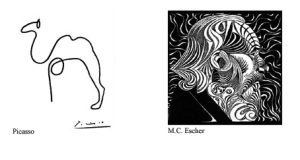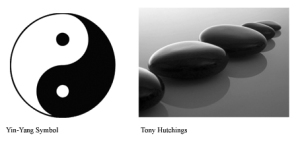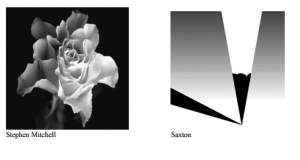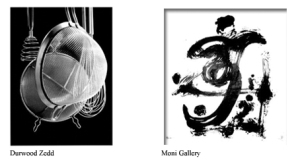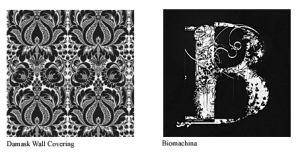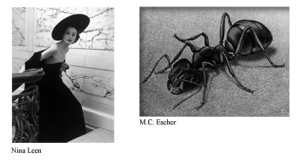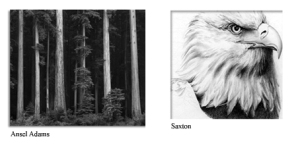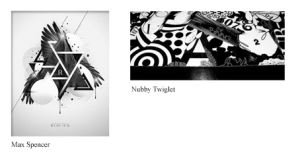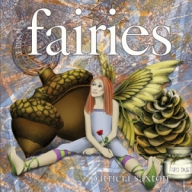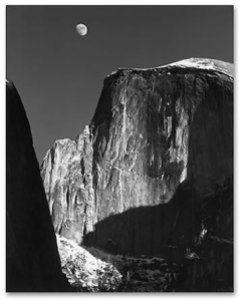
Ansel Adams, Moon and Half Dome
Each year, a new Ansel Adams wall calendar hangs on the door leading to my studio. His superbly articulated, stunning black and white photography reminds me daily of my love for the natural world as well as the innumerable shades, shapes, shadows and tones that create, change, and emerge from, the world around us.
Yet in a time when everyone wants color, the classic beauty and the powerful visual possibilities of black and white are often neglected. In the design world, black and white is often completely overlooked or passed by in favor of any use of color. As if black and white implies something less important, or something dull – even something “cheap”.
But when used well, black and white can be anything but dull, nor without value. Black and white can be intensely dramatic, elegant and rich. It can get a strong point across without the distraction of colors. It can be brilliant or moody, edgy or slick in ways that color cannot. It can sparkle with cleanliness. Black and white carries undisguised strength, character and integrity … when used well. Not all photographers have the eye nor skill of an Ansel Adams. Not all designers see in black and white. Clients rarely consider it. But it would be nice to see a greater appreciation of the noble duo of black and white.
When people want straight talk, they’ll say “tell me in black and white” – which infers that they’ll get to the truth of the matter. But more often people speak in shades of gray, or dress it up in garish colors for dramatic effect. So it is with design – a multitude of colors have the potential to become an undifferentiated sea of grays, or gussied up so much the point is lost for the color.
Of course color is beautiful. As an artist, I can’t help but adore color. Bold, rich fusions of color. Yet color alone will not make a bad design good. And it’s not so much that color is overrated, but that black and white is underrated. You don’t see it alot, which is unfortunate, because the effects of black and white can be pretty spectacular.
It’s a rich experience to see things in black and white; stripped of color, a million shades of gray become a lansdcape of lights and darks that blend and bounce against one another to create a whole. Even if you don’t see things quite like that, a striking black and white image often touches people unexpectedly. It’s raw and fundamental – and like a good story, it’s satisfying, and it allows your mind to fill in the color that’s left unsaid. Like a well-told story, black and white art can be refreshing, engaging and wonderfully, surprisingly inspiring.
Below is a broad sampling of some pretty nice black & white work. There’s a whole lot more (though not enough) than shown here, but it’s a good smattering of styles …
